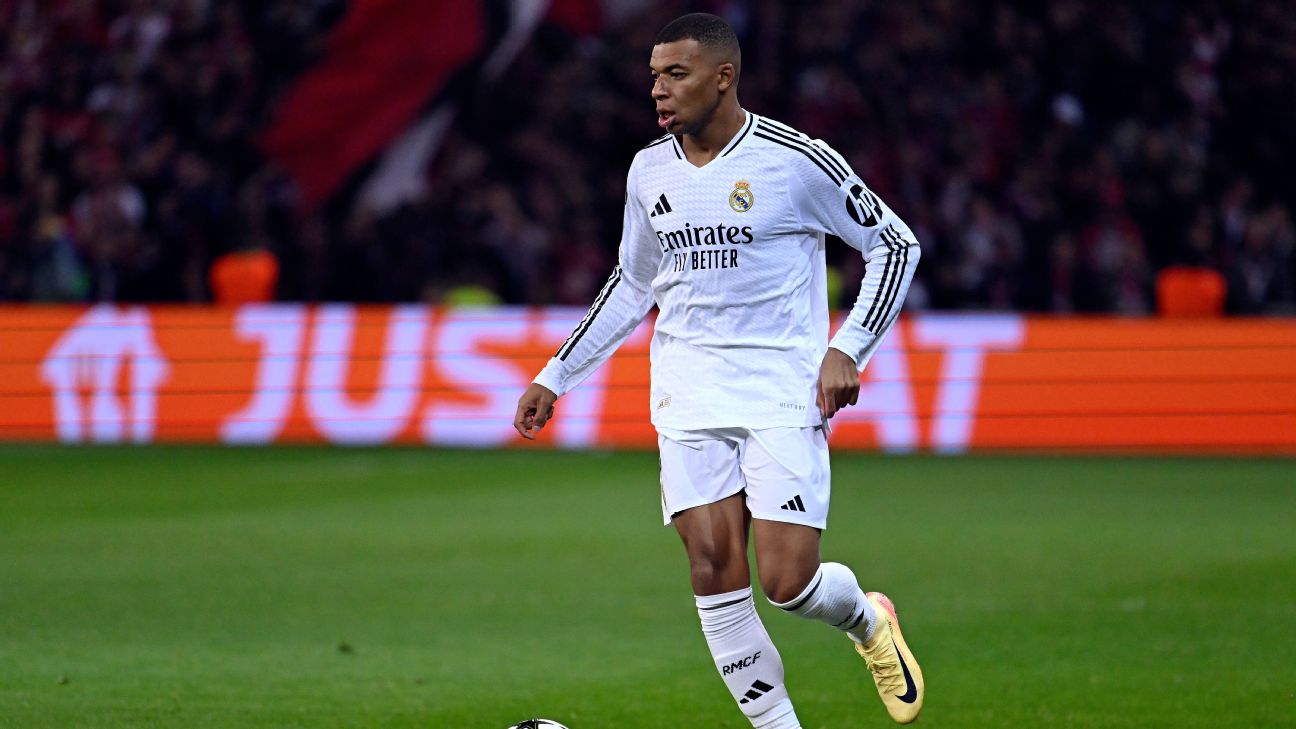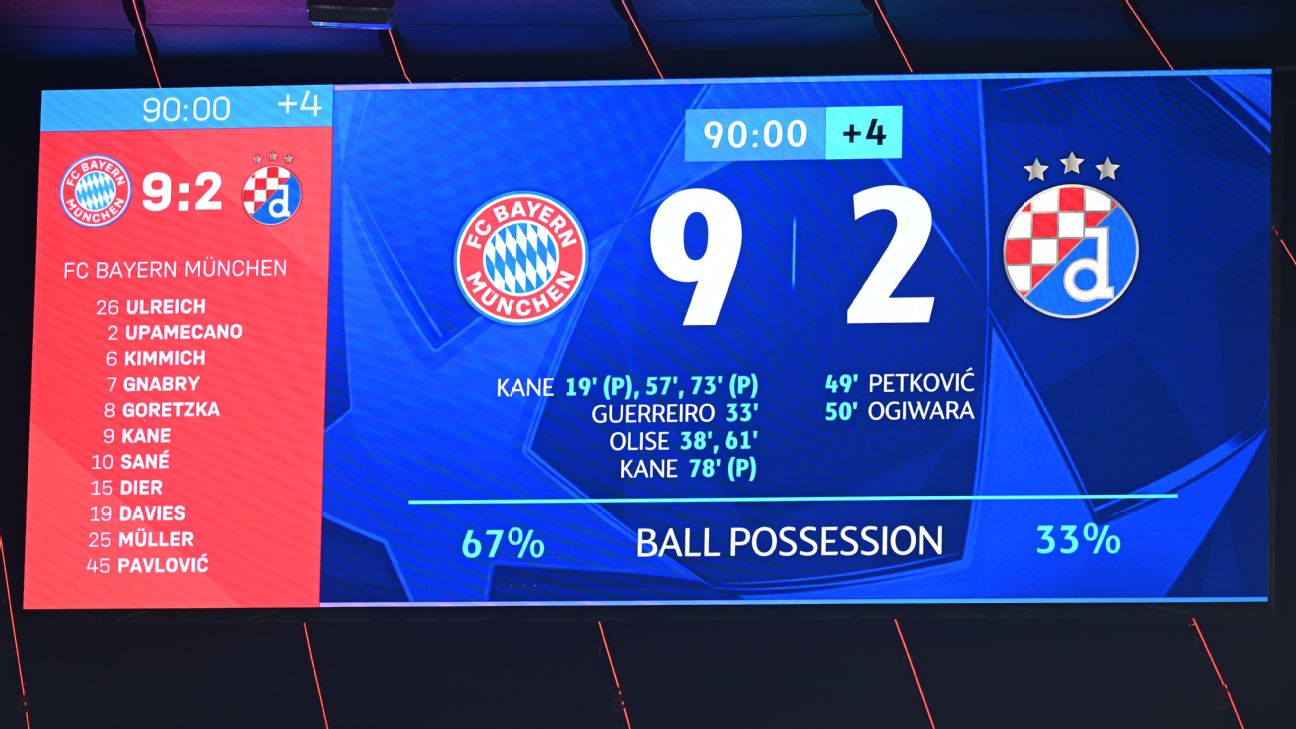There are only three players in Serie A this season who have scored at least five non-penalty goals and created at least five assists. The first two: Inter Milan’s Marcus Thuram and Roma’s Paulo Dybala.
You know the third player because he is the most famous American soccer player of all time, and he’s playing for the club with the second-most Champions League titles of all time.
Everyone is talking about Christian Pulisic. You can’t walk down the street without a random stranger bursting out of a door, grabbing you by the arm, and forcing you to watch grainy video of Pulisic’s assist to Ruben Loftus-Cheek against Bologna, or his goal against Sassuolo.
Delis are naming sandwiches after him. Tattoo artists across the United States are quitting in protest over having to spend their days iterating on some version of a “CP10” design. Your grandmother figured out how to not only use her television, but how to download, sign up for and then navigate the Paramount+ app in order to watch Christian Pulisic play in Serie A.
I kid, so as not to cry. Somehow, Pulisic is in the midst of the best season of his professional career, for one of the biggest clubs in the world, and it feels like it’s going under the radar. So, what has driven Pulisic’s reinvigoration? And, more importantly for Milan and U.S. men’s national team fans alike, will he be able to keep it up?
Pulisic, the most productive winger in Italy
Put simply, Pulisic has been one of the most productive, ever-present attackers in Serie A so far this season. Among players to appear in at least 1,200 minutes of game time, he ranks fifth in the league in per-90-minute attacking contribution (non-penalty goals and assists):
1) Lautaro Martínez, Inter Milan: 1.07
2) Dusan Vlahovic, Juventus: 0.95
3) Marcus Thuram, Inter Milan: 0.84
4) Olivier Giroud, AC Milan: 0.82
5) Christian Pulisic, AC Milan: 0.68
For context, here are some players outside of Italy who Pulisic has outperformed by this same metric so far this season: Real Madrid’s Vinícius Júnior and Rodrygo, Barcelona’s Robert Lewandowski, Manchester City’s Phil Foden, Julián Álvarez, and Bernardo Silva, Arsenal’s Gabriel Jesus, Bukayo Saka, and Gabriel Martinelli.
Inside of Italy, he’s been more productive than the both of star duo — Victor Osimhen and Khvicha Kvaratskhelia — that drove Napoli to a Serie A title just a year ago. Plus, unlike the four players ahead of him on the Serie A list, Pulisic is not a striker. Given that he’s starting deeper on the field and theoretically required to do more than just assist and score goals, those numbers look even more impressive.
If we take a step back in the possession chain, Pulisic’s impact doesn’t dissipate, either. The site FBref created a stat called “goal-creating actions” that they define as such as the two offensive actions that lead to a goal, and “this includes live-ball passes, dead-ball passes, successful dribbles, shots which lead to another shot, and being fouled.” In other words, it’s a way of awarding players who were involved in a goal but might not have played the pass that led directly to the goal. The only Serie A players with more goal-creating actions than Pulisic’s 12 this season are Thuram (15) and his Inter Milan teammate Henrikh Mkhitaryan (13).
To tie it all together, there are only 10 players across Europe’s “Big Five” top leagues so far this season who’ve scored at least six non-penalty goals and generated at least 12 goal-creating actions.
In the Premier League, it’s Liverpool’s Mohamed Salah and Darwin Núñez, Aston Villa’s Ollie Watkins, and Newcastle’s Anthony Gordon. There’s no one in Ligue 1, and just one in LaLiga: Villarreal’s Alexander Sorloth. In Germany, there are three: Bayern Munch’s Leroy Sané and the Bayer Leverkusen duo of Alex Grimaldo and Victor Boniface. In Serie A, there are only two: Thuram and Pulisic.
Pulisic’s goals and assists are up, but everything else is down
In soccer today, the modern winger needs to do two things: score goals and help his team generate the capacity to score goals. Each specific winger is tilted toward one pole or the other. Kylian Mbappé is on one end — mostly goals, goals, and more goals — while Bukayo Saka sits at the other. The best version of Pulisic is right around the middle: roughly equal parts goal-scoring and helping his teammates score goals. We’ve seen that version of Pulisic so far this season, but it’s unlikely to continue in this same form.
On the goal-scoring side, Pulisic has scored six goals from 3.7 expected goals, or xG. Despite his efficiency in front of goal this season, he’s scored 1.7 goals fewer than expected since the start of the 2017-18 season. He’s never been a standout finisher, and there’s little reason to believe he’s suddenly become one. This year, he’s attempted seven shots with an xG value of 0.14 or better, and he’s scored four of them.
Here is a map of all of his shots this season — the larger the circle, the higher the xG the shot generated:

Not only has Pulisic turned his own shots into goals at a super high rate, but his teammates have converted his passes into goals just as efficiently. He’s generated 3.0 expected goals assisted, but his teammates have turned them into five goals.
As you can see, just two of his assists came from passes completed inside the penalty area:

The same thinking applies to his goal-creating actions. If we look at all shot-creating actions, Pulisic has helped generate 50 attempts for his teammates. That’s tied for 34th-most in the league despite those actions leading to 12 goals, third-most in the league. Pulisic’s involvement in play, then, has led to an unusually high number of goals this season. Otherwise, his general involvement in the game is down in just about every major way.
Here’s a selection of some of his top-line metrics at Chelsea, per 90 minutes, compared to his first season in Milan:
• Non-penalty xG+xA: 0.48 at Chelsea, 0.41 at Milan
• Shots: 2.5 at Chelsea, 1.9 at Milan
• Progressive passes: 3.5 at Chelsea, 2.8 at Milan
• Shot-creating actions: 3.5 at Chelsea, 3.1 at Milan
• Touches in the penalty area: 5.7 at Chelsea, 3.6 at Milan
• Successful take-ons: 3.3 at Chelsea, 2.7 at Milan
If Pulisic had one elite skill before coming to Milan, it was his off-ball movement. That showed up in all of his touches inside the box with Chelsea, and we all saw it on his winning goal against Iran at the World Cup, too:
His overall number of touches is about the same as they were at Chelsea — just slightly down from 50-per-90 minutes to 48.3-per-90 at Milan — but he just hasn’t been as involved in the most dangerous area of the field as often. He’s not pushing the ball forward as much, he’s not taking as many players on, and he’s not shooting as much as he used to.
In a backward way, Pulisic’s season has gone under the radar because all of the shots are going in. If his chances and his teammates’ chances were being converted at a normal rate, USMNT fans would be able to have their favorite kind of conversation: Do we need to worry about this American soccer star?
So, do we need to worry about Pulisic?
Normally, I’d say “yes.” Pulisic’s underlying production — the 0.41 non-penalty xG+xA per 90 — ranks tied for 198th among all players in Europe’s “Big Five” leagues who have appeared in at least one-third of their team’s minutes. In Serie A, he’s tied for 25th.
That’s… fine? But when you consider that he’s an attacker on one of the best teams in Italy, 25th feels like the bare minimum for a starter in his position.
Plus, it’s not like he’s seen a ton of touches around the goal that haven’t turned into shots or chances created. Twenty-six other players in Serie A have registered more touches inside the penalty area. And on top of all that, he’s 24. He’s supposed to be entering his prime, and he’s moved to a less competitive league — both factors that should theoretically boost his performance. Instead, it’s mostly gone in the opposite direction.
And yet, I don’t think it’s time to freak out. At Milan, he is receiving more progressive passes than he did at Chelsea (9.3 per 90 minutes, up from 8.6). That’s a signal that he’s still able to find dangerous space — windows for players to pass him the ball — even if it hasn’t been inside the penalty area as often as in the past.
On top of that, his general contribution to Milan’s possession play is being undersold by some of these more basic numbers. Back in December, I wrote about a statistic called “Expected Possession Value” or EPV. Essentially, it looks at every on-ball action over the course of a match and calculates how much it increases or decreases a team’s chances of scoring a goal within the next 10 seconds.
For Milan, Rafael Leão leads the way in EPV at 0.21 per 90 minutes. In other words, his actions are adding 21% goal probability across a 90-minute match. Pulisic isn’t far behind, ranking second on the team at 0.18 EPV per 90.
These are all of Pulisic’s open-play passes that have increased Milan’s goal probability by at least 5%:

Along with Leao and midfielder Tijjani Reijnders, Pulisic is one of Milan’s three most-important players in terms of generating dangerous possession. And this is for a team that’s second in the league in both non-penalty goals and expected goals.
Plus, playing time was more important for Pulisic this season than performance. He hasn’t played more than 1,800 minutes in a league season since he was an 18-year-old with Borussia Dortmund in the 2017-18 season. He played 75% of the minutes that year, and he’s at 74% for Milan this season. In the five years in between, though, he never got beyond 51% of the minutes. Pulisic simply hasn’t been a full-time starter in European soccer in six years. For now, re-establishing himself as such matters more than his underlying output.
And then, for USMNT fans in particular, Pulisic’s performances with the national team don’t really seem to have any kind of connection with his club form. In an up-and-mostly-down 2023 with his club situation, Pulisic scored six goals and added three assists in eight caps for his country. The year before that, 2022, was probably the worst single year of his professional career — and yet, at the World Cup, he was fantastic.
Based on a handful of advanced and basic stats, FBref calculates the 10 most similar players within a competition for every player. For Pulisic, at the World Cup, the third-most-similar player was Germany’s uber-prospect Jamal Musiala. Second was Brazil’s Vinicius Junior, perhaps the best left-winger in the world. And first? Kylian Mbappe, perhaps the best player in the world.
After that, well… I guess I wouldn’t get too excited about a few goals and a few assists in Serie A, either.



